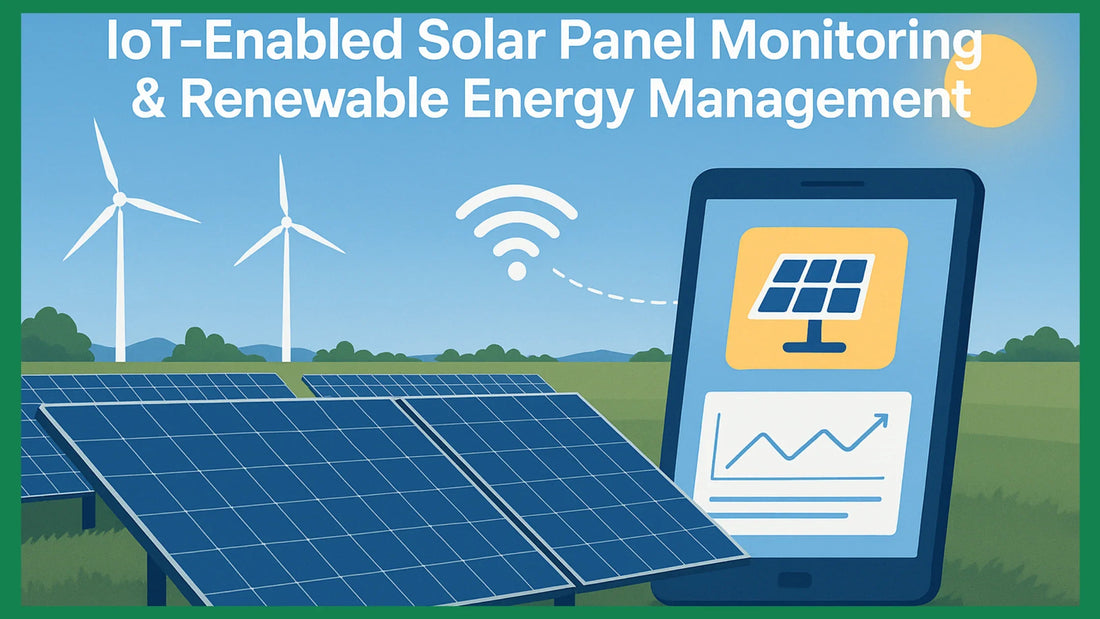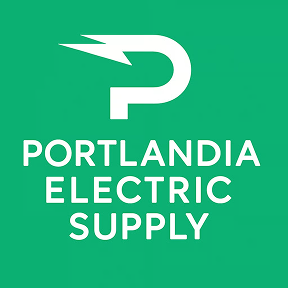
IoT for Solar Panel Monitoring & Renewable Energy Management
Share
IoT for Solar Panel Monitoring & Renewable Energy Management
In recent years, the integration of IoT technologies with solar energy systems has revolutionized the way we manage and optimize energy production. By utilizing IoT devices, we can monitor and control solar panels in real-time, enhancing energy efficiency and system performance. This innovative approach not only maximizes energy output but also supports the transition towards more sustainable and environmentally friendly energy solutions.
Understanding Solar Energy and Its Importance
What is Solar Energy?
Solar energy is a form of renewable energy harvested from the sun's rays using photovoltaic cells. As a continuously replenished energy source, it stands alongside other renewable energy sources such as wind energy, hydropower, and geothermal energy. Solar panels play a crucial role in converting sunlight into electricity, forming the backbone of solar energy systems that contribute to sustainable energy solutions worldwide.
Benefits of Renewable Energy
Renewable energy, particularly solar energy, offers significant environmental benefits. Solar panels generate clean energy with no greenhouse gas emissions, thus reducing the carbon footprint associated with traditional energy production. Smart homes equipped with IoT-enabled solar systems optimize energy consumption, leading to substantial cost savings and conservation of natural resources. This shift towards renewable energy sources helps decrease reliance on fossil fuels, promoting an eco-friendly and sustainable lifestyle.
The Role of Solar Power in Today's Energy Landscape
In 2023, the global solar energy market was valued at approximately $184 billion, with projections to reach $293 billion by 2028. Solar power is increasingly utilized across diverse sectors, from residential homes to large-scale industrial solar farms, supplying clean and renewable energy. By reducing dependency on fossil fuels, solar energy plays a pivotal role in lowering greenhouse gas emissions and fostering a sustainable energy future. The integration of IoT solutions in solar energy management ensures efficient energy usage and enhances the overall energy system's performance.
Solar Panel Systems: An Overview
Components of Solar PV Systems
Solar panel systems, primarily composed of photovoltaic (PV) panels, utilize various components to harness solar energy efficiently. These panels consist of multiple solar cells made from semiconductors like silicon, which convert sunlight into electricity. This generated direct current (DC) is transformed into alternating current (AC) by inverters, making it usable for household appliances. IoT technologies enhance these systems, using sensors to measure sunlight, temperature, and energy output to optimize energy generation.
Types of Solar Panels
Solar panel technology has diversified, offering various types to suit different energy needs and optimize solar energy production. Bifacial panels can absorb light from both sides, maximizing energy output. Perovskite solar cells, known for their high efficiency and lower production costs, represent a promising advancement in solar technology. These innovations cater to diverse applications, ensuring efficient energy management and supporting broader adoption of renewable energy sources.
Solar Farms and Their Impact
Solar farms play a crucial role in large-scale solar energy production, contributing significantly to the global energy supply. By utilizing solar energy management software, these farms leverage IoT-enabled sensors to collect and manage data, ensuring optimal energy distribution. This integration of IoT systems enhances monitoring and management capabilities, leading to more efficient energy usage and supporting the sustainable growth of solar energy production on a large scale.
IoT in Solar Energy: Transforming Energy Management
What are IoT Solutions for Solar?
IoT solutions for solar energy involve the integration of smart technologies to enhance energy management and system performance. By integrating IoT devices, solar energy systems become easier to monitor, maintain, and optimize, resulting in improved energy efficiency and reduced costs. IoT connectivity allows for real-time monitoring and data analysis, enabling precise optimization of energy consumption patterns and ensuring that both homes and businesses operate at peak efficiency.
Real-Time Monitoring with IoT Sensors
IoT sensors are pivotal in providing real-time monitoring of solar energy systems, ensuring optimal energy usage and system performance. These sensors continuously assess solar panel performance, measuring conditions like sunlight and temperature to optimize energy output. IoT connectivity facilitates automatic data collection, enhancing accuracy and speed. This capability is crucial for meeting incentive program requirements, ensuring compliance, and optimizing energy consumption through detailed insights and real-time management.
Optimization of Solar Power Generation
The optimization of solar power generation is significantly enhanced by the integration of IoT technologies. By collecting and analyzing vast amounts of data, IoT systems identify patterns and improve energy management over time. Companies are developing platforms that simplify the connection and management of IoT devices within solar energy systems. The use of AI and ML technologies further optimizes energy distribution, ensuring efficient energy usage and enhancing the overall performance of solar installations.
Enhancing Solar Energy Management with IoT Connectivity
Integration of IoT in Solar Energy
The integration of IoT technologies in solar energy systems represents a significant advancement in energy management. These IoT devices, ranging from everyday household items to sophisticated industrial tools, create an interconnected ecosystem that enhances the efficiency of solar energy management. Smart meters play a crucial role by providing real-time data on energy production and consumption, enabling precise monitoring and control. Changes in government policies and incentives for renewable energy and IoT can greatly impact the feasibility and financial viability of these projects. The primary goal of IoT integration is to create smarter, more efficient systems by allowing these devices to work together, making decisions based on real-time information. This approach facilitates real-time monitoring and management of energy production and consumption, optimizing energy usage and enhancing the overall performance of solar energy systems. Furthermore, solar energy systems can be seamlessly integrated with other smart home devices, such as thermostats and appliances, to create a fully automated and energy-efficient home environment.
Smart Solar Solutions for Efficiency
Smart solar solutions leverage Artificial Intelligence (AI) and Machine Learning (ML) to enhance the efficiency of solar energy systems. By analyzing data from IoT sensors, AI and ML can predict equipment failures, optimize energy production, and improve system reliability. Smart grids are instrumental in better integrating solar energy and other renewables into the power grid, thereby improving overall grid stability and efficiency. Advanced analytics tools within our software solutions analyze historical data, identify trends, and generate comprehensive reports to optimize energy management. This approach minimizes thermal stress on solar panels, which can lead to decreased efficiency and potential damage over time. These insights help identify patterns and areas for improvement, ensuring that solar energy systems operate at peak efficiency. IoT plays a critical role in integrating solar energy with the grid, balancing energy supply and demand, and enhancing overall system stability.
Energy Distribution and Monitoring Through IoT
IoT connectivity enhances energy distribution and monitoring capabilities by enabling systems to sell excess energy back to the grid through net metering, providing additional savings. IoT-enabled appliances can be programmed to operate during peak solar production times, optimizing the use of generated solar power and reducing reliance on grid electricity. Smart grids facilitate decentralized energy production, where households with solar panels can contribute excess energy back to the grid, enhancing grid stability and earning compensation. IoT platforms integrate with energy management systems to balance power production and consumption effectively. Consumers can manage their energy usage more effectively, with IoT sensors providing real-time data on the performance of solar panels. This allows users to monitor their systems remotely, ensuring optimal energy management. Systems like Philips Hue allow users to control lighting remotely, set schedules, and adjust brightness and color, contributing to energy savings and convenience.
The Power of IoT in Renewable Energy Management
IoT-Enabled Energy Management Systems
IoT-enabled energy management systems revolutionize how homeowners and businesses manage their energy consumption. Home Energy Management Systems provide real-time monitoring and management of energy use, helping homeowners identify energy hogs and optimize overall consumption. These smart home systems can automate energy-intensive tasks based on energy availability and usage patterns, significantly enhancing energy efficiency. IoT can autonomously manage energy distribution in smart homes, optimizing the use of solar energy and reducing reliance on grid power. By leveraging IoT technologies, users can adjust energy usage patterns to align with solar energy production, ensuring maximum efficiency and cost savings.
Case Studies of Successful IoT Integration
Case studies of successful IoT integration in solar energy management illustrate the transformative impact of these technologies. For instance, WEZOM increased sales by 65% and conversions by 150% by fully developing an online store, with 1C and amoCRM integrations. Such success stories demonstrate the potential of IoT in optimizing energy management and enhancing system performance. By incorporating IoT solutions, businesses can streamline operations, improve customer engagement, and achieve significant financial gains. These case studies serve as a testament to the power of IoT in driving innovation and efficiency in renewable energy management.
Future Trends in Smart Solar Technologies
The future of smart solar technologies lies in the continued integration of IoT with renewable energy systems. Devices with built-in sensors will monitor energy production, consumption patterns, and environmental conditions in real-time, enhancing system efficiency and reliability. Edge computing is poised to play a pivotal role by processing data locally, reducing latency and bandwidth usage. Smart batteries will store excess solar energy, ensuring a continuous power supply when needed. AI and ML will predict maintenance needs for solar panels and IoT devices, reducing downtime and prolonging the lifespan of the systems. Government incentives, such as tax credits and rebates, will make solar panel investments more affordable and attractive. Smart grids will enhance grid resilience and reliability by quickly responding to outages and rerouting power as needed, minimizing disruptions. IoT-enabled solar systems will integrate seamlessly with other smart home devices, creating a fully automated and energy-efficient home. As renewable energy sources like solar, wind, and hydro are efficiently integrated, a stable and reliable energy supply is ensured, paving the way for a sustainable energy future.
